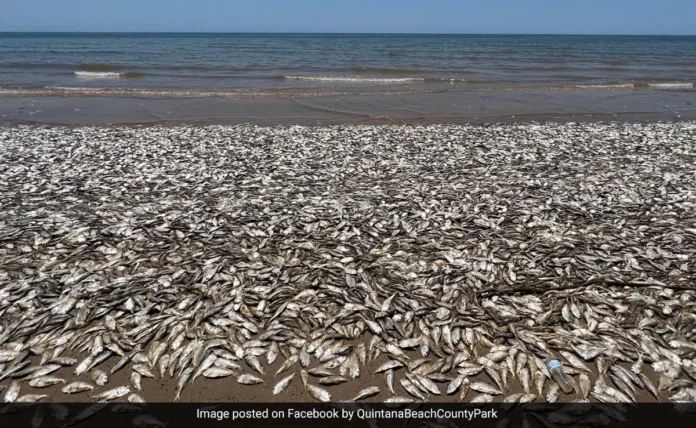Thousands of dead fish, specifically Menhaden, were discovered washed ashore on a beach in the Gulf Coast of Texas. Local officials and marine experts attribute the mass fish mortality to warm water conditions, which can hold less oxygen than cooler water, according to a report by Fox News.
The lifeless Menhaden fish were initially spotted at Bryan Beach’s far end, as reported by local authorities. They explained that when water temperatures rise above 70 degrees Fahrenheit, it becomes challenging for Menhaden to obtain sufficient oxygen for survival. Warm water cannot retain as much oxygen, which leads to a lack of oxygen supply for the fish, ultimately causing their demise. Quintana Beach County Park shared this information on Facebook.
Menhaden, known for swimming with their mouths open and gill openings wide to filter out plankton, form dense schools spanning from Canada to South America, as stated by Encyclopaedia Britannica. According to the Facebook post by officials, if these fish become trapped in shallow waters as temperatures increase, they start to experience hypoxia, leading to a depletion of oxygen levels. The fish then exhibit erratic behavior, further exacerbating the oxygen deficiency.
Katie Saint Clair, the sea life facility manager at Texas A&M University at Galveston, highlighted the role of climate change in warming waters. Speaking to the New York Times (NYT), she suggested that as water temperatures continue to rise, events like these may become more frequent, particularly in shallow and near-shore environments.
The first reports of the dead fish emerged on Friday when the National Weather Service recorded a temperature of 92 degrees Fahrenheit in Brazoria County. Bryan Frazier, the director of Brazoria County Parks Department, stated to NYT that fish kills of this nature are not uncommon in the region, typically occurring when water temperatures rise during the summer.
The presence of thousands of dead Menhaden fish on a Texas Gulf Coast beach is attributed to warm water conditions and reduced oxygen levels. Such occurrences, while not uncommon in the area, may become more frequent due to increasing water temperatures associated with climate change.

